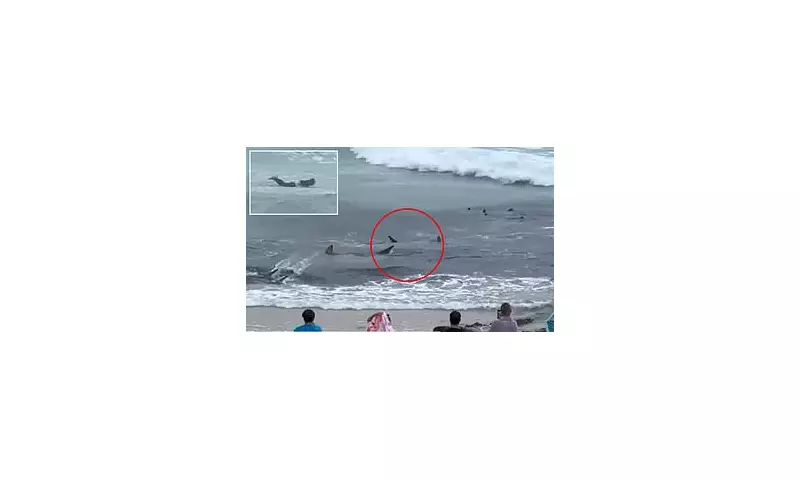
A chilling marine spectacle unfolded off the Gold Coast as dozens of sharks engaged in a violent feeding frenzy mere metres from the world-famous surfing break at Snapper Rocks.
Horrified bystanders watched as the ocean turned red with blood while the predatory fish thrashed and circled in a desperate battle for food. The dramatic scene was captured in aerial footage that shows the sharks swarming in disturbingly clear shallow waters.
Too Close for Comfort
The feeding frenzy occurred dangerously close to shore, raising serious concerns among local surfers and beachgoers. Witnesses reported seeing at least twenty sharks participating in the bloody feast, with some estimating the number could be as high as thirty.
"It was absolutely terrifying to watch," said one local surfer who witnessed the event. "The water was literally churning with sharks fighting over whatever they were feeding on. You could see the blood spreading through the water from the air."
Marine Experts Weigh In
Marine biologists suggest the frenzy was likely triggered by a large school of bait fish being driven into shallow waters. When predators like sharks corner these dense concentrations of prey, competitive feeding behaviour can escalate into the dramatic scenes witnessed at Snapper Rocks.
While such events are natural occurrences in marine ecosystems, seeing them play out so close to popular swimming and surfing areas serves as a stark reminder that humans are entering the sharks' natural habitat.
Safety Implications
Local authorities have reminded beachgoers to remain vigilant and heed any warnings from lifeguards. While shark encounters remain statistically rare, events like this feeding frenzy demonstrate how quickly marine predators can gather in coastal areas.
Surfers and swimmers are advised to avoid areas where large schools of fish are visible, particularly if seabirds are diving into the water - a common indicator of bait fish presence that attracts larger predators.
